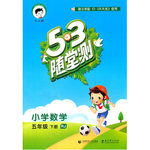题目内容
B. cried
C. is crying
D. cries

 53随堂测系列答案
53随堂测系列答案
| |||||||||||||||||||||||||||||||||||||||||||||||||||||||||||||||||||||||||
| 完形填空。 | ||||
| Wishing to encourage her young son's progress on the piano, a mother took her boy to a Paderewski concert. After they were seated, the mother 1 a friend and walked down the aisle to greet her. Seizing the 2 to explore the wonders of the concert hall, th Qe little boy rose and went 3 a door marked" NO ADMITTANCE". When the house lights dimmed (变暗) and the concert was about to begin, the mother returned to her 4 and discovered that the child was missing. Suddenly, the curtains 5 and spotlights focused on the stage. In horror, the mother saw her little boy sitting at the keyboard, 6 out"Twinkle, Twinkle, Little Star". At that moment, the great piano master 7 his entrance, quickly moved to the piano, and 8 in the boy's ear,"Don't 9 . Keep playing." Then leaning over, Paderewski reached down with his left hand and began 10 in a bass (低音 ) part. Soon his right arm reached 11 to the other side of the child and he added a running obbligato (伴奏). 12 ,the old master and the young boy 13 a frightening situation into a wonderfully creative 14 . That's the way it is in life. 15 we can accomplish (完成 ) on our own is 16 noteworthy. We try our best, but the 17 aren't exactly graceful flowing music. 18 when we trust in the hands of a Greater Power, our life's work truly can be beautiful. Next time you set 19 to accomplish great feats, listen carefully. You can hear the 20 of the Master, whispering in your ear," Don't quit. Keep playing." | ||||
|